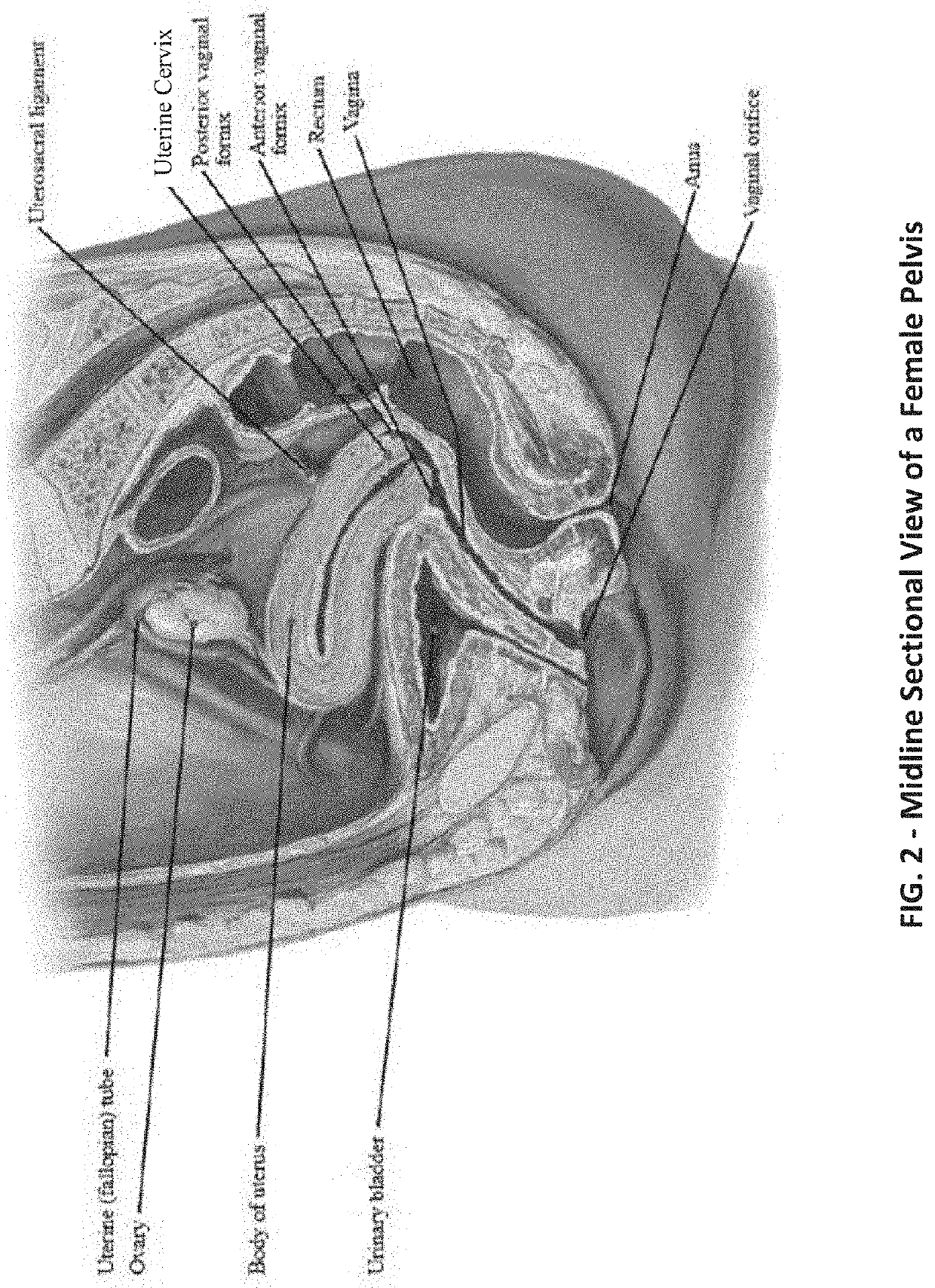Intravaginal Electrical Stimulation Device for Treating Female Pelvic Pain
a technology of electrical stimulation and pelvis, which is applied in the field of pelvic pain treatment methods and devices for women, can solve the problems of recurring bouts of depression, anxiety, emotional distress and low self-esteem of women, and achieve the effect of reducing or eliminating the sensation of pelvis pain
- Summary
- Abstract
- Description
- Claims
- Application Information
AI Technical Summary
Benefits of technology
Problems solved by technology
Method used
Image
Examples
Embodiment Construction
[0008]The pain associated with dysmenorrhea, dyspareunia and chronic pelvic pain typically originates in the uterus and other organs in the pelvis. The sensation of this pain is transmitted through numerous neural structures in the pelvis, including sympathetic, parasympathetic, and visceral sensory nerve fibers, many of which traverse ligaments in the pelvic floor supporting the uterine cervix and upper vagina, including the cardinal ligaments (See FIG. 3B). These supporting ligaments attach to the uterus just above (superior to) the area where the vaginal epithelium joins the uterine cervix (the “paracervical vaginal epithelium”) in the vaginal fornices. The application of electrical stimulation to the paracervical vaginal epithelium using embodiments of the present invention is highly desirable and beneficial because the treatment is directly targeted to cause neuromodulation of the neural structures in the pelvis (hereinafter the “pelvic nerves”), including the nerves that trave...
PUM
 Login to View More
Login to View More Abstract
Description
Claims
Application Information
 Login to View More
Login to View More - R&D
- Intellectual Property
- Life Sciences
- Materials
- Tech Scout
- Unparalleled Data Quality
- Higher Quality Content
- 60% Fewer Hallucinations
Browse by: Latest US Patents, China's latest patents, Technical Efficacy Thesaurus, Application Domain, Technology Topic, Popular Technical Reports.
© 2025 PatSnap. All rights reserved.Legal|Privacy policy|Modern Slavery Act Transparency Statement|Sitemap|About US| Contact US: help@patsnap.com



